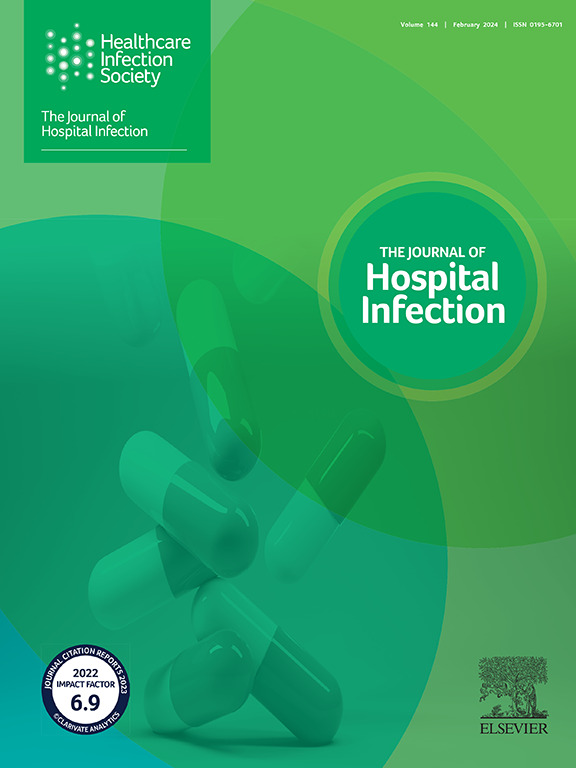一次性器械再处理申请之评估:台湾经验。
IF 3.1
3区 医学
Q1 INFECTIOUS DISEASES
引用次数: 0
摘要
背景:对一次性医疗器械(sud)进行再处理是世界范围内的常见程序。然而,需要标准化的指导方针来确保再加工sud的质量和安全。目的:本研究旨在探讨台湾医疗机构中与SUD再加工相关的因素。方法:在台湾卫生福利部的监督下,制定标准化的后处理评估合格检查表。然后,本研究对行政资料进行回顾性回顾。收到并分析了来自不同地区26个医疗保健机构对sud进行再处理的申请。计算了12个检查表项目的成功率以及总成功率。使用广义估计方程来确定与成功率相关的潜在因素。结果:目前的研究结果表明,有5个医疗中心、12个地区医院和9个县医院参与了研究。本署共收到394份再处理33份sud的申请。大约27%的应用程序可以通过所有12个清单项目。医院类别和地点、员工人数和年收入与总体成功率相关。结论:由于只有约四分之一的供体医院能够通过所有成功评价sud后处理的标准,建议建立更强有力的监测系统,以确保可接受的后处理程序。有必要进一步调查与SUD后处理成功评估相关的因素。本文章由计算机程序翻译,如有差异,请以英文原文为准。
Assessment of applications for reprocessing single-use devices: experiences from Taiwan
Background
Reprocessing single-use medical devices (SUDs) is a common procedure worldwide. However, standardized guidelines are needed to ensure the quality and safety of reprocessed SUDs.
Aim
To examine the factors associated with SUD reprocessing in Taiwanese medical settings.
Methods
A standardized qualification checklist for reprocessing assessment was developed under the supervision of Taiwan's Ministry of Health and Welfare. A retrospective review of administrative data was used in the present study. Applications for reprocessing SUDs were received and analysed from 26 healthcare settings across different regions. Success rates over 12 checklist items, as well as the total success rate, were computed. Generalized estimating equations were used to identify potential associated factors with the success rates.
Findings
The present study results show that five medical centres, 12 regional hospitals, and nine district hospitals participated. Overall, 394 applications for reprocessing of 33 SUDs were received. Approximately 27% of applications could pass all 12 checklist items. Hospital class and location, number of employees, and annual income were associated with the overall success rate.
Conclusion
Because only about one-quarter of contributing hospitals could pass all criteria defined for successful evaluation of SUD reprocessing, establishing a stronger monitoring system is suggested to ensure acceptable reprocessing procedures. Further investigation of factors associated with successful evaluation of SUD reprocessing is warranted.
求助全文
通过发布文献求助,成功后即可免费获取论文全文。
去求助
来源期刊

Journal of Hospital Infection
医学-传染病学
CiteScore
12.70
自引率
5.80%
发文量
271
审稿时长
19 days
期刊介绍:
The Journal of Hospital Infection is the editorially independent scientific publication of the Healthcare Infection Society. The aim of the Journal is to publish high quality research and information relating to infection prevention and control that is relevant to an international audience.
The Journal welcomes submissions that relate to all aspects of infection prevention and control in healthcare settings. This includes submissions that:
provide new insight into the epidemiology, surveillance, or prevention and control of healthcare-associated infections and antimicrobial resistance in healthcare settings;
provide new insight into cleaning, disinfection and decontamination;
provide new insight into the design of healthcare premises;
describe novel aspects of outbreaks of infection;
throw light on techniques for effective antimicrobial stewardship;
describe novel techniques (laboratory-based or point of care) for the detection of infection or antimicrobial resistance in the healthcare setting, particularly if these can be used to facilitate infection prevention and control;
improve understanding of the motivations of safe healthcare behaviour, or describe techniques for achieving behavioural and cultural change;
improve understanding of the use of IT systems in infection surveillance and prevention and control.
 求助内容:
求助内容: 应助结果提醒方式:
应助结果提醒方式:


